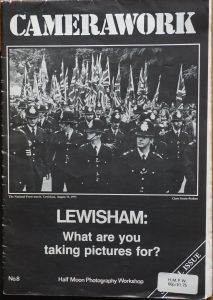

Stieglitz in 1902 by Gertrude Käsebier
Alfred Stieglitz, a pioneering photographer and influential figure in the world of modern art, played a crucial role in elevating photography as a legitimate art form in the early 20th century. Through his innovative techniques and relentless dedication to pushing the boundaries of the medium, Stieglitz transformed photography into a powerful means of expression and opened new avenues for artistic exploration. His profound understanding of the craft and his unwavering commitment to capturing the essence of the subject matter revolutionized the field and established him as a true master of the art of photography.
Stieglitz’s significance lies not only in his technical expertise but also in his visionary approach to photography as an art form. He believed that photographs could communicate emotions and ideas as effectively as any other art form, and he set out to prove this through his own work and by promoting the works of other photographers. In 1902, he founded the Photo-Secession movement, a collective of photographers dedicated to advancing the artistic potential of photography. Through exhibitions, publications, and lectures, Stieglitz and the members of the movement sought to challenge the prevailing notion that photography was purely a documentary tool or a mechanical reproduction of reality.
One of Stieglitz’s most famous works is the series of photographs known as “Equivalents.” Created between 1923 and 1934, these images are abstract representations of clouds, devoid of any recognizable subject matter. Stieglitz saw the clouds as a metaphor for the intangible aspects of life, and he aimed to capture their ever-changing forms and moods. By stripping away the context and focusing solely on the play of light, form, and texture, Stieglitz transformed these ordinary natural phenomena into powerful symbols of human emotions and experiences. The “Equivalents” series exemplifies Stieglitz’s belief in photography’s capacity to convey the unseen and to evoke profound emotional responses.

Equivalent (1925), one of numerous cloud photographs of the sky taken by Stieglitz
Stieglitz’s technical mastery and attention to detail were instrumental in achieving his artistic vision. He was a relentless experimenter, constantly pushing the boundaries of what was considered possible with the medium. He explored new printing techniques, such as photogravure and platinum printing, to achieve rich tonal ranges and exquisite detail in his images. Stieglitz was also a firm believer in the power of the print itself as the final expression of the photograph. He emphasized the importance of the printing process, employing meticulous care to achieve the desired tonal quality and texture in his prints. Through his mastery of technique, Stieglitz was able to imbue his photographs with a sense of depth, atmosphere, and emotion, elevating them from mere records of reality to works of art in their own right.
Stieglitz’s contributions extended beyond his own photography. As an art dealer and curator, he introduced European modernist painters, such as Pablo Picasso and Henri Matisse, to American audiences and helped to establish their reputations. Through his gallery “291” and his publication “Camera Work,” Stieglitz provided a platform for artists across various disciplines, including photography, painting, and sculpture. He sought to create a dialogue between these different art forms, blurring the boundaries between them and encouraging cross-pollination of ideas. Stieglitz’s efforts to promote photography as a fine art and to bridge the gap between photography and other art forms were instrumental in the development of modern art movements in America.
Alfred Stieglitz’s legacy is profound and enduring. His relentless pursuit of artistic expression through photography transformed the medium into a respected art form and paved the way for future generations of photographers to explore the full potential of the craft.

